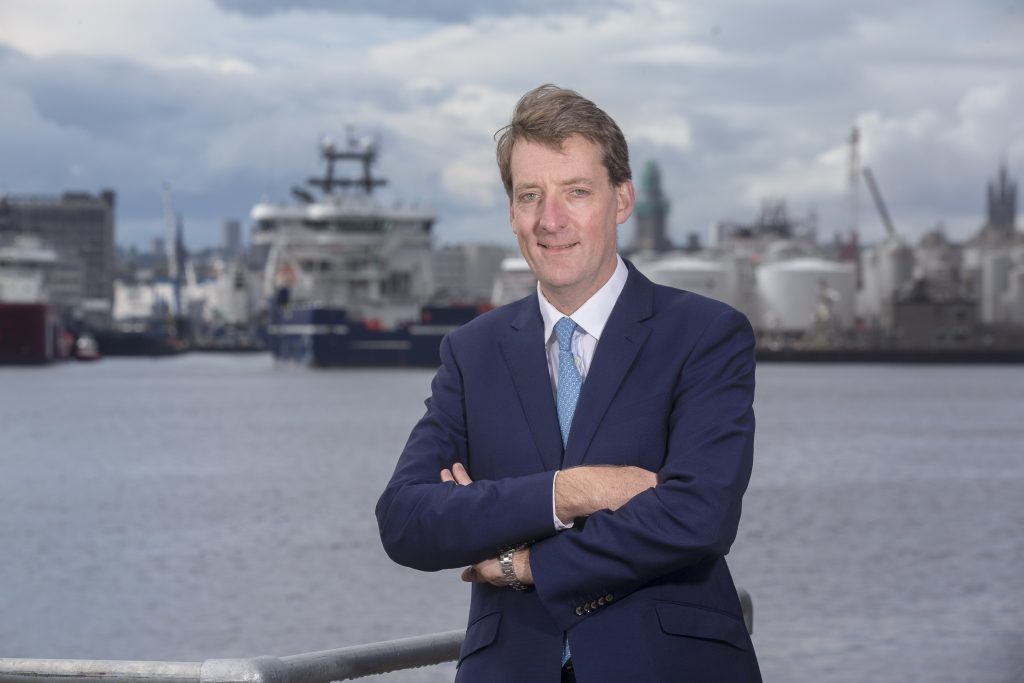
The Oil and Gas Authority’s (OGA) chief executive has 900 million barrels in his direct line of sight.
The number represents the potential known production using existing infrastructure, which could be brought on line through a slight increase of the North Sea’s recovery factor.
The figure is an add on to the 4 billion barrels up for grabs through OGA’s new area plans.
Speaking at this year’s Offshore Europe, he said it’s a much clearer picture than the one he had two years ago at his oil show debut as the chief of the new regulator.
“Two years ago we were hopeful and relatively confident that the whole Wood Review implementation would go as Sir Ian had envisioned,” he said.
“But it still felt like an experiment. It hadn’t been done before, particularly this notion of how the new regulator would work with both industry and government.”
His first task was to establish trust with the Treasury.
“They saw we were bringing a new level of evidence and information to help policy makers,” he said.
His second was batting away the hurdles to production, including dispelling the myth that the North Sea was only a “sunset industry”.
“There was a perception that it was a super mature, high-cost, inefficient basin,” he said.
“The way we swept that away was by bringing in new data and that’s why we are so keen to get new data through our surveys, because then you can use that to provide information to dispel the myths around the costs and potential.”
The OGA also prioritised making sure companies have third party access to infrastructure.
“When that comes up now I say to the team to prioritise that and let’s do that as quickly as possible,” Mr Samuel said.
“The last one we did was in seven weeks, and that sends a clear message that third party access no longer need be a barrier. We will make sure people get access to infrastructure. If there’s a fair commercial solution we will make sure that gets expedited.”
Finding costs in the North Sea were $2 a barrel in 2016.
“It shows what’s possible,” Mr Samuel added.
“We have world class finding costs.”
And the global conversation is staring to shift.
“From a global context, they are now saying they like the UK, because it’s beginning to feel more stable than many parts of the world,” Mr Samuel said.
“They really like what the Treasury has done and they really like that the government has continued to listen – there’s a degree of trust.
“We know the North Sea has got a great service sector. They like the regulator and they like the change of culture. That used to be a big barrier, that commercial culture.
“While the North Sea still has work to do, it is getting better.”
But there are “quick wins” on the horizons.
“The quicks wins could be tweaking the water injection and the way that’s handled. It could be perforatting a few other intervals on wells,” he said.
“One of the operators that I highlight is Apache.
“They do a lot of small things that add up. Nexen is also doing a lot around marginal gains. That sort of mentality doesn’t cost much but has great payback.”
And the payback could be in the form of “several Johan Sverdrup” equivalents on the UKCS.
The Statoil-operated Johan Sverdrup is one of the five largest oil fields on the Norwegian continental shelf, with expected resources of between 1.9-3billion barrels of oil equivalent.
The current North Sea recovery factor in the North Sea is 43%, meaning more than half of the known oil would be left stranded.
“We went out to the industry and asked where they would like us to get more data,” Andy said.
“The east of Shetland play was of particular interest. A few people have a glint in their eye of some interesting plays there.”
To realise its potential there is one final frontier to conquer – industry behaviour.
“The industry worked one way for 30 to 40 years very successfully,” he said.
“In the heyday, each new fault block brought huge wealth to companies. It was very competitive and you didn’t need to collaborate. Now people realise we are in a different phase of the basin. It is very interconnected. The opportunity now is working together. But it takes a while to unlearn old behaviours and learn new behaviours.”
However, he added: “I think the world may change quicker than any of us realise. I think we will look back in 20 years and be astounded at what happened, and I don’t what that will be. But what I am absolutely certain of is the skills and brilliance of the people in this industry are highly relevant in all scenarios.”
Recommended for you
